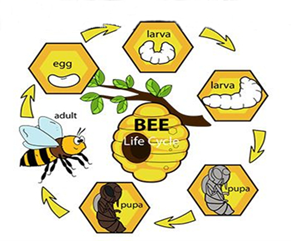
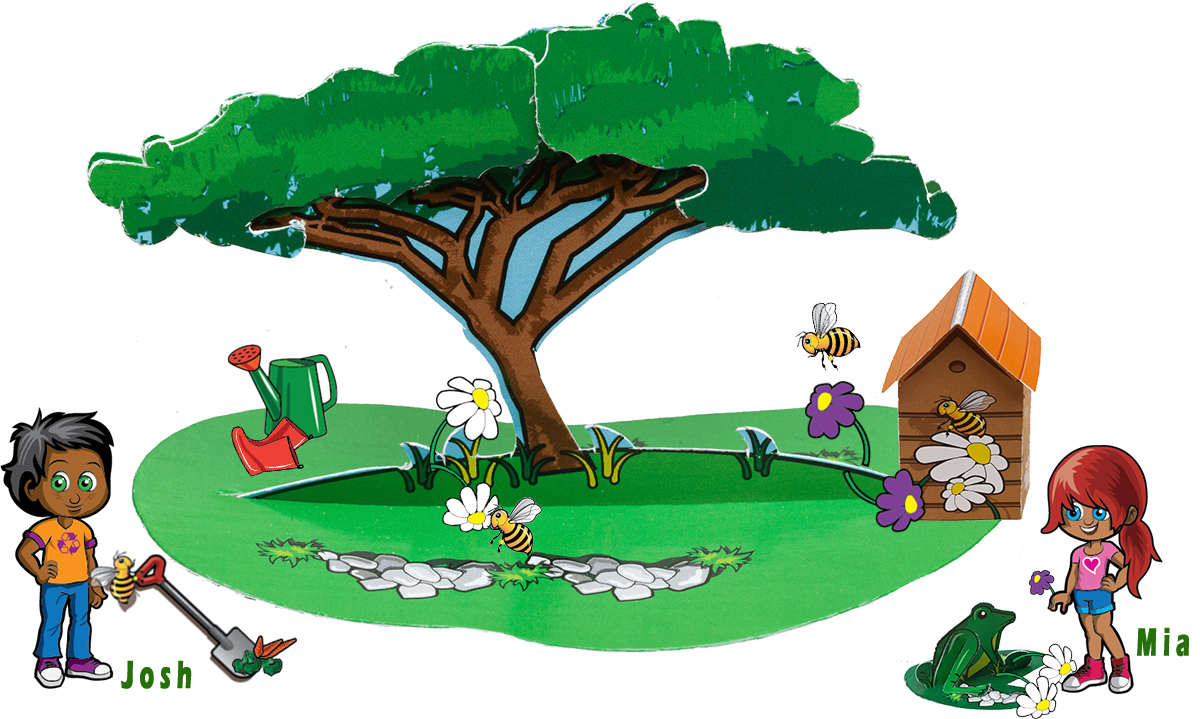
Educators’ notes: 1.
The EcoHome Family and its Warriors
Environmental greetings: We begin our journey together and are going to have fun saving our planet, Mother Earth. Let us reach out to each other and hold hands, forming a circle and remember we are going on this adventure as brothers and sisters of our planet. What wonders and miracles are we going to discover? The amazing balance of life on Mother Earth and to learn how she wants us to care and share our love for all living things, in all lifetimes.
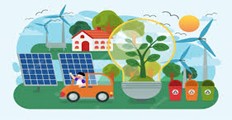
Lesson overview: Today we will discuss the meaning of home. Can we share our thoughts and describe our own homes, whether they are in urban areas or rural in the mountains. What is the similarity between the materials used to build our homes and that of the EcoHome house areas? How does our home compare to the homes of bees, birds and ants? Discuss what makes a home a safe place for growth and living.
Activity for the learners: Let’s have some creative fun with our learners! Divide them into groups of 4. Each group will work together to create their EcoHome, from the 9 lessons they will add what they have learnt such as recycling, energy, saving water, natural resources, the life of frogs, the trees and the bees. By the end, their EcoHome will be completed and filled with wonderful ideas on how to save planet Earth!
Caring for the School Grounds: Discuss how learners can contribute to cleaning up their school grounds, making it a safe place for learning and for all living things, such as ants, birds, insects, spiders and grasshoppers. Explore whether there are trees, plants and water surrounding their homes. Discuss if they live near animals like cows, goats, donkeys, or sheep.
Encourage learners to draw special people and animals in their lives. Through this activity, learners will develop a deeper understanding of their surroundings and the importance of caring for all of creation. Help them realize that they are not alone in this world; they have a supportive and plentiful family all around them.
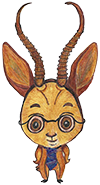
Introduce Mr. Bok: Each week the group will choose one of the learners to be Mr. Bok and he/she will read the fact cards. Together, we will discover our connection to living things, as guardians and EcoHome superheroes of the world around us.
➢ In our next lesson, we will explore the concept of recycling, waste and, how each one of us can become EcoHome Warriors by cleaning up where we live, play and go to school. Throughout the lessons we will learn to care for Mother Nature and her world and how she big heartedly shares her wonders and miracles with all living things. On this adventure we are going to become superheroes in our home, community and our school. Join the adventures with the EcoHome family and Its warriors.
Educators’ notes: 2.
Together we CAN clean up our world?
We travel with the EcoHome family and warriors as they begin their recycling projects and learn about the different types of energy and how it can be sustained.
Welcome back young learners, to another lesson with the EcoHome family. Today, we will explore the importance of recycling and how it reflects our love for Mother Earth. Taking care of our planet is very important for the growth and well-being of all living things, including people, nature, birds, bees, wild animals. By showing care for our environment, we show love and respect for each other. Now, let us look closely into how we can clean up our waste and make our environment safe for all living things.
Environmental greetings: Those that have brought coloured items are wearing coloured t-shirts, come to the front of the class and form a circle: green items represent paper, yellow items represent plastic and red items represent glass. Those that are still sitting, come into our circle. We greet each other and say thank you to Mother Earth.
Who is Mr. Bok today’s?
Mr. Bok, asks the class what waste do we find in our home, gardens and communities? Can we do something about it? What will happen if we DON'T recycle? Failing to recycle will harm young trees, pollute water, pollute the air and fill the land with mountains of waste. It destroys living things on Mother Earth. To STOP recycling is not an option for our world.
Lesson Overview:
Recycling reduces waste sent to landfills and special ovens that burns litter. Reducing, reusing and recycling waste helps reduce or cut back on the amount of waste we make each day. Re-use means finding new ways to use things that otherwise would have been thrown out. Recycle means to turn something old and useless (like plastic milk jugs) into something new and useful (like shopping bags and wrapping paper). Recycling prevents pollution: when these mountains of waste are burnt in the special ovens, they cause huge clouds of dark smoke which pollutes the air and water. Plastic waste travels through the rivers into our seas and chokes the fish.
Recycling conserves natural resources. If we re-use paper, plastic and glass, the amount of energy and natural resources is greatly reduced to manufacture the new packaging that we need for daily living, plastic bags for our bread, milk bottles, tin foods and so much more. Using recycled material will use less energy than non-recycled material.
What will happen to our earth if we DON’T recycle? We will destroy natural resources, oil, coal, natural gas, metals, stone and sand.
Mr. Bok: Explains the recycling process for each material? Paper Recycling: Recycled paper is collected, washed and turned into mash. It is then used to make various paper products like printing paper, toilet paper, tissues, paper towels, napkins, greeting cards, cardboard, magazines and newspapers. Plastic Recycling: The process involves sorting, tearing up, melting and molding plastic to create products such as containers, medicine bottles and bags. Glass Recycling: Recycling glass is a simple process that includes sorting, washing, crushing and melting to produce new glass products.
Conclusion: Recycling is vital for conserving resources, reducing waste and protecting the environment. By recycling paper, plastic, glass and other materials, we can make a positive effect on the Earth.
➢ In our next lesson, we will go on to explore conserving heat and cooling air with recycled roof insulation. We learn how to conserve energy. Come and join the adventures with the EcoHome family and meet Meg, the magic carpet.
Educators’ notes: 3.
Insulating your roof can reduce heat loss.
Welcome back, young EcoHome warriors, to another lesson with the EcoHome family. Today, we will learn about staying warm in winter and cold in summer and understand the importance of insulation.
Environmental greetings: Let us all stand up and say ‘Hello’ and remember we say thank you to Mother Earth. Let us stretch out our arms, point our fingers, as far as we can and do circles with our arms. Do we feel hot or cold? Can we choose Mr. Bok for today’s lesson?
Lesson overview: When we run, jump or climb we generate heat which increases our body temperature. What do we do when we are cold? We wear a warm jersey or put a blanket on our beds. What we are doing is keeping warm. In summer we wear a T-shirt to stay cool, because the temperature of our bodies is hot.
That is the same as insulating the roof, we prevent the cold air from entering our homes through the roof in winter and in summer the insulation stops the heat from the hot sun from entering through the roof into our homes and this helps to keep our house cool.
What is thermal energy? Thermal energy is another term for heat energy. It is generated when molecules rub against each other, causing friction. Faster-moving molecules create more heat energy, like boiling water.
Heat energy is transferred when there is a temperature difference between two objects. Now, rub your hands together for about 30 seconds, place your hands on your face, what do you feel? Is it warm? This is an example of heat energy transferred from one object [our hands] to another [the surrounding air and our skin], making us feel warm.
Why Is Energy So Important in Our Lives? Energy is important in our daily lives because it is a basic human need. We use energy to not only heat up our home but cool it as well. Energy is necessary for getting up out of bed, walking down the street, or even lifting your finger.
Insulation is the material or method used to reduce the measure of heat which is transferred to another: By putting a tea cosy on a teapot, the heat loss from the tea inside is reduced! Birds fluff up their feathers in the winter to trap air in between to help insulate them from the cold.
We have learnt that by rubbing our hands together we make heat energy and we have successfully transferred heat energy from one hand to the other. We know that insulating the roof saves heat in winter and keeps our home cool in summer. Our bodies regulate temperature by a thermometer in our brains to estimate how cold or hot we are. This is thermal energy.

Meet Meg, the Magic Carpet, who represents the recycled "think pink" roof insulation. Meg lives in the roof to keep our home warm in winter and cool in summer. However, she becomes too heavy to fly when it rains.
➢ In our Next Lesson: We will learn about Heat Energy and discover how Sunny, the solar panel, powers our homes with electricity by harnessing (to control something, usually in order to use its power) the sun’s heat energy. Experience exciting adventures with the EcoHome family!
Educators’ notes: 4.
Solar energy is a renewable energy source.
Sunny, the solar panels on the roof, makes use of the heat energy from the sun and converts it into electricity, powering our lamps, lights and providing hot water.
Welcome back young learners, to another exciting lesson with the EcoHome family. Sunny is the solar panel fixed to the roof of the EcoHome.
Environmental Greetings: Let us stand up, greet each other and thank Mother Earth for all living things. Forming a circle and holding hands we are going to be the sun. How do we describe our circle of sunshine: yellow, shining, warm and safe? Can we choose Mr. Bok for today’s lesson?
Lesson overview: We will explore the energy of the sun and its outcome on our lives and the primary form of energy - heat energy. The sun's heat and light warm our seas, stirs our climates, causing weather patterns and gives energy to plants, which provides food and oxygen for life on Earth.
Without the sun's heat and light, life on Earth would not exist. The Sun is the giver of life; it helps keep the planet warm enough for us to survive. The sun has a very important influence on our planet: It drives weather, ocean currents, seasons and climate and makes plant life possible through photosynthesis. We learn how these natural developments are like magical dances happening all around us in nature. Imagine plants, animals and the environment all playing together in harmony. One cool dance move is called ‘photosynthesis,’ where plants use sunlight to make food and release oxygen, helping us breathe. Then there is ‘pollination,’ where bees and butterflies spread pollen, helping plants grow into yummy fruits and colourful flowers. Another dance move is ‘décomposition,’ where tiny helpers break down dead plants and animals, turning them into nutrients for new life to grow. These dances create amazing natural communities, like forests, oceans and grasslands, where all living things work together to keep our planet healthy and beautiful! Solar energy is the energy produced by the sun. We can directly or indirectly use this energy for electricity in our homes. Solar panels, fixed on rooftops, capture solar energy and convert it into electricity. Solar energy provides us with heat, light and various other uses.
Stored energy refers to energy stored in different forms, such as food, petrol and batteries. When we eat, our bodies break down our food into smaller parts and use it as fuel. Stored energy also helps us stay warm when we're cold. Carbohydrates, proteins and fats are the main nutrients that provide us with energy, with carbohydrates being the most important energy source.
Example: The wood cut from the tree is the stored energy in the wood, it turns to heat energy when we light the wood for a fire. Wind energy is another form of renewable energy harnessed from the movement of air, which is used to turn windmills or turbines. Wind energy is found all over our planet and is a sustainable and pollution-free source of power. The heating of the sun and the uneven surface of the Earth creates wind. Kinetic energy is the energy of movement. For example, when a runner starts running, potential energy is converted into kinetic energy. Before Chloe jumps, she is using stored energy and as she hops, she converts stored energy to kinetic energy. Who can give me an example of kinetic energy? Let us do magical dances with Mother Nature.

Mr. Bok's Insight: Energy cannot be created or destroyed; it can only be converted from one form to another. Solar energy is a clean source of power.
Class Activity: Paper Windmills - Let us have some fun and make paper windmills to study the movement of wind energy into circling motion
➢ Preview of Next Lesson: Water is vital for sustaining life, it’s essential for all living things. The energy from a waterfall can produce electricity. Let us explore the precious resource of water with the EcoHome family and meet Mama Lucy.
Educators’ notes: 5.
Life-forms use water to carry nutrients around the body and to take away waste.

Welcome back, young learners, to our next exciting adventure! Today, we dive deep into the marvelous world of water—a source of life and the essence of all living beings on Earth. Just like the roots of a magnificent tree draw water from the soil, we depend on water to sustain and nourish us, enabling plants, animals and people to grow and flourish together.
Environmental greetings: Let us stand up, greet each other and close our eyes as we thank Mother Earth for the lifesaving water. We see the oceans, how ice provides freshwater, we see life in one drop of water and we see ourselves dancing in the rain.
Who is going to be Mr. Bok today?
Lesson overview: Water plays a critical role in supporting ecosystems, regulating temperatures and aiding importing biological processes. From satisfying our thirst to creating flourishing habitats for different types of organisms, water is the most important resource for life as we know it. Without water, life on our planet would stop to exist. But what are natural or biological processes? They are the magical communicators among plants, animals and the environment. Picture a dance where photosynthesis, pollination, decomposition and other natural processes create and shape communities like forests, oceans and grasslands, where every living being has a role to play. In our lesson, we will explore some key points about water. First, we'll learn about the universal need for water, how all living things require it for survival. Then, we'll discover how water supports a diverse range of ecosystems, each unique in its requirements and adaptations. Water is not only essential for nature but also vital for human civilization. We'll learn how water is used for drinking, agriculture, industry and hygiene. However, we must remember the importance of conservation and protection to ensure that this precious resource remains available for generations to come. Next, we'll unveil the fascinating water cycle—the process where water travels between the Earth's surface, atmosphere and bodies of water through natural paths. This cycle ensures a continuous supply of water for all living things, much like a never-ending dance of nature. We'll explore how water represents purification, renewal and cleansing.
During our journey, we will also touch on the difference between living and non-living things. Water, being the foundation of ecosystems, provides habitats and nourishment for countless species. It maintains the balance of Mother Earth's climate, regulating temperatures through evaporation and condensation. And don't forget, water also travels throughout our bodies, carrying oxygen and waste to and from our cells and organs—a precious gift we must cherish. As guardian of Mother Earth, it is our responsibility to protect and cherish water, preserving it for future generations and ensuring the continuity of life on our beloved planet.

Mr. Bok says, "A person can live approximately a month without food, but only a week without water." Water is interconnected with everything around us and what we do to the Earth can directly impact our water supply. Let us cherish water—the giver of life—and continue our journey towards a sustainable and eco-friendly lifestyle!
➢ In our next lesson, we'll learn the secrets of natural gas with the EcoHome family. We'll explore its importance, the compounds it contains and discover the wonders of this fossil fuel source of energy.
Educators’ notes: 6.
Over millions of years, organic matter is compressed to produce natural gas.
Welcome back, young learners, to our next exciting adventure with the EcoHome family! Today, we are looking into the fascinating world of natural gas and understanding its role as a fossil fuel energy source provided by Mother Earth herself. Her divine plan from the beginning of creation to the present day. In this wondrous planet, every tiny living thing is intricately designed to exist with nature’s grandest elements. Mother Earth’s meticulous and precise creation reveals her deep knowledge and understanding of humanity’s needs, spanning through history and into the 21st century.
Environmental greetings: To begin our lesson, let's show our gratitude to Mother Earth by standing up, greeting each other and clapping our hands in thanksgiving for the miracles of her creation. Today, Mr. Bok will be our guide through this learning journey. We are going to explore the fascinating world of natural gases, how Mother Earth provides the natural gas and its role as a fossil fuel energy source.
What is natural gas? It's a fossil fuel, which means it was formed from the remains of ancient animals and plants that were buried and compressed for millions of years. These fossil fuels, like natural gas, are non-renewable resources, which means that one day, we will run out of them. That's why it's essential to learn about sustainable alternatives. But before we go into that, let's explore how natural gas is formed. Over millions of years, organic matter gets buried deeper into Earth's crust and encounters higher temperatures. This combination of compression and heat breaks down the carbon bonds in organic matter, giving birth to natural gas.
To use natural gas, we need to extract it from the ground through drilling. After extraction, it goes through a refining process to remove any impurities. Once ready, natural gas has many important uses in our daily lives. We use it for cooking on our gas stoves and heating our homes with gas heaters. It also helps generate electricity for our homes and drives vehicles.
Now, it's essential to talk about renewable and non-renewable resources. Renewable resources like solar energy and wind power can be naturally restored over time and are sustainable. On the other hand, non-renewable resources like natural gas are limited and take millions of years to form. That's why we must prioritize using renewable resources to protect Mother Earth and ensure a better future. While natural gas has benefits, like lower carbon emissions compared to coal and oil, it also comes with challenges. For example, drilling and extraction may lead to air and water pollution and harm wildlife and natural habitats. In our journey to become EcoHome warriors, it's crucial to understand the impact of our energy choices and explore sustainable alternatives to protect our planet.
➢ In our next lesson, we will meet two warriors of the EcoHome family, Chloe and her prince Nakaya, who play a vital role in maintaining a healthy ecosystem. From controlling insect populations to influencing plant growth and the food chain, they show us how every creature has a special place in Mother Earth's divine plan. Get ready for more exciting discoveries with the EcoHome family! Stay curious, be mindful of our environment and let's continue our journey towards a more sustainable and eco-friendly future.
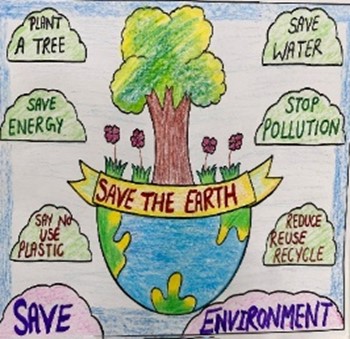
Educators’ notes: 7.
Get ready to leap into the fascinating world of frogs!
Welcome, young learners! In this lesson, we will explore the amazing impact that frogs have in keeping a healthy ecosystem. From their special life cycle to their role in controlling insect populations, supporting plant growth and the food chain, frogs make an outstanding contribution to Mother Earth. Let us discover the importance of frogs and why it is important to protect and conserve them. Meet Chloe and her prince Nakaya, two of the warriors of the EcoHome family.
Environmental greetings: Let us start this journey by standing up, greeting each other and drawing a huge heart with our fingers to thank Mother Earth for all she provides for every living thing. We are all beautiful beings, but valuable to the energy of our Earth. Every living creature, no matter how small or great, has a purpose and a place in the miracles of life. Together, let us cherish and protect this wonderful planet we call home.
Lesson overview: In this lesson, we explore the important roles of frogs in keeping the delicate balance of ecosystems. We appreciate their useful gift to our planet and understand the challenges they face in our modern world. By understanding the importance of frogs and addressing the threats they come across, we can work towards taking care of a healthy and blossoming ecosystem. Frogs are fascinating and strange creatures and we need to protect and support them.
Key Points:
Double Life of Frogs: Frogs begin as water tadpoles and change into land-dwelling frogs, displaying their adaptability and special role in ecosystems.
Importance of Frogs: Frogs are greedy eaters, consuming billions of insects each year, making them valuable for agriculture and pest control. They also serve as a critical food source for snakes.
Evolution and History: Frogs have a long history, with their ancestor. They possess fascinating adaptations, including vocal cords and a diverse life cycle.
Mr. Bok discusses Frogs in today’s world: A frog’s home is the environment in which it eats, shelters and breeds. If it cannot find a suitable habitat, it will die. So, the greatest threat to frogs is pollution in our rivers and dams.
Frogs are amphibians, unlike people, they breathe partly through their skin, which is constantly exposed to everything in nature, and their bodies are much more sensitive to environmental factors such as disease, pollution, toxic chemicals and habitat destruction.
Frogs were the first land amphibians to have vocal cords, with male frogs using vocal sacs to produce different sounds that can be heard from a mile away. Exploring the life cycle of frogs helps us understand the difficulty and union of life on Earth. From fertilized eggs, to tadpoles, to fully developed adult frogs, they have a remarkable journey.
‘Red Eyed Tree Frogs’ This species of frog is found in the lowland tropical rainforest of Central America. They can jump higher than other species of frogs.
➢ Preview of Lesson 8: In the next lesson the EcoHome family and warriors will embark on an exciting study of the life of trees on Earth. Join the EcoHome family as we uncover the wonders of these magnificent creations and deepen our appreciation for their role in sustaining life.
Educators’ notes: 8.
Exploring the Life of Trees on Earth.
Welcome, young adventurers! Today, we are setting off on an exciting journey to discover the incredible world of trees! Trees are like superheroes of nature, playing vital roles in keeping our planet healthy and happy.
Environmental greetings: To start our lesson, let's stand up, greet each other and then form a circle holding hands, we are going to hug uMsasane our EcoHome tree. We thank Mother Earth for the gift of trees.
Lesson overview: Throughout our journey, we'll follow the history of trees, from the ancient Tree of Life to the present day. We'll learn their life cycle, understanding their importance in sustaining ecosystems and appreciate the benefits they bring to our environment. Trees are crucial, providing oxygen, shelter and essential resources for our daily needs. Trees are life on Earth. Let’s understand their life cycle. Trees start as tiny seeds, just like the ones you find in fruits, with the help of soil, sunlight and water, they grow into beautiful trees. As they get older, they become big and tall, reaching for the sky like friendly giants.
Why are trees so important? Well, they are like the "lungs of the Earth." Just like we need air to breathe, trees absorb carbon dioxide and release oxygen into the air. They help keep our planet fresh and clean for all living creatures, including us! As we breathe out, they breathe in. But that's not all! Trees are homes for many animals, big and small. Birds build their nests in tree branches; squirrels make cozy homes in tree holes and bugs live in the bark. Trees are like hotels for wildlife! Forests, which are big groups of trees, are like bustling cities for nature. They are incredibly diverse and support countless plant and animal species, making our planet a vibrant and colourful place. Trees are also great for conserving our environment.
Their strong roots hold the soil in place, preventing it from washing away during heavy rains. This helps protect our land and keeps the rivers clean and healthy. Imagine trees as giant sponges that soak up water from the ground and release it into the air. This process helps regulate the water cycle, making sure we have enough rain for plants to grow and for us to drink.
Throughout history, trees have been important to people too! They have provided us with shelter, food and materials for building things like houses and furniture. They have even been part of our stories and celebrations, representing life and growth. So, as we explore the wonders of trees, let's remember how vital they are for us and all living things on Earth. We have a special responsibility to take care of them, just like they take care of us. Together, we can protect and cherish our leafy friends, making our world a greener and happier place!
Young explorers Mr. Bok shares something amazing about trees! They have a super cool way of talking to each other and making friends underground. Can you believe it? They have a special partnership with some helpful fungi called mycorrhizal fungi. These fungi and the trees exchange nutrients for sugars, like a yummy snack swap! And here's the cool part: the fungi have long, thread-like structures called hyphae that act like extra arms for the tree's roots. They help the tree absorb even more water and nutrients from the soil! But that's not all - when a tree needs something important, like more food or water, it sends secret messages through the soil using chemicals. And guess what? The neighboring trees get those messages through the mycorrhizal network and rush to help their friend in need! It's like a big tree teamwork party! Isn't that amazing? Trees are like a big family, taking care of each other and working together to keep our planet healthy and happy. So next time you see a forest full of trees, remember how they're all best buddies, helping each other out in their own special way. Let's learn from the trees and be good friends to each other and to our Earth! Nature is full of incredible wonders and trees are one of the coolest superheroes in our world! Keep exploring and discovering the magic of nature, just like Mr. Bok and the EcoHome family. Have a great adventure!
➢ In our next lesson, we'll look into the world of honeybees, exploring the way they communicate and their strong bond of community, unity, compassion and hard work. Get ready to buzz with excitement and meet Tiyah, the EcoHome scout bee and her hives.
Educators’ notes: 9.
The Fascinating World of Honeybees.
Welcome, young adventurers! To our buzzing adventure into the fascinating world of honeybees! Today, we're going to explore the incredible communication of these tiny but clever insects. Join us as we learn from these remarkable creatures and apply their lessons of unity, compassion and hard work to our own lives. Get ready to buzz with excitement and meet Tiyah the EcoHome scout bee and her hives, as we explore the wonders of bees. Together, we'll learn nature's teamwork and the magic of pollination! Let's buzz with excitement and join Mr. Bok as we uncover the fascinating secrets of honeybees!
Classroom activity: To start our lesson, let's stand up, greet each other and then flap our arms like wings of bees and make their buzzing sound, loud enough that everyone will hear. Bees are one of the miracles of Mother Earth. She has taken great care to create trees, bees, water, sun, people and all living things to be dependent on one another. She has created a home that is perfectly balanced. If we destroy her world of trees and water, we will banish all living things. We need to remind ourselves that we do not live alone, we are brothers and sisters to all living things.
Lesson overview: In this lesson, we will study the fascinating life of honeybees and discover the secrets behind their special ways of communication. Bees provide us with an example of a caring and faithful community that works hard together for the benefit of the whole hive.
Did you know that honeybees have their very own way of talking to each other? It's like having a secret code! They do a special dance called the "waggle dance" to show their friends where to find yummy nectar and pollen. They wiggle and move in specific patterns to give detailed directions, just like a treasure map!
Guess what? Honeybees are amazing team players! They live in big families called colonies and each bee has a special job to do. Some bees are expert hunters, collecting nectar from flowers to turn it into yummy honey. Others take care of the baby bees, build the hive and protect their nest. They all work together like a perfect team to keep their colony strong and happy.
These little bees are not just hard workers; they are also nature's helpers! When they fly from flower to flower, they help plants make new seeds and fruits through a process called pollination. It's like magic, helping plants grow and making sure we have lots of tasty fruits and veggies to eat! Oh, and let's not forget about artificial pollination! Sometimes, we help plants pollinate when nature needs a little hand. We gently move pollen from one flower to another, just like the bees do, to make sure the plants can grow their seeds and fruits.

Mr. Bok shares that we can learn from these clever bees. They teach us the importance of talking to each other and helping one another, just like good friends. Their strong work values and dedication remind us to be hard working just like little busy bees!
